The 20 Best PC Games of 2021
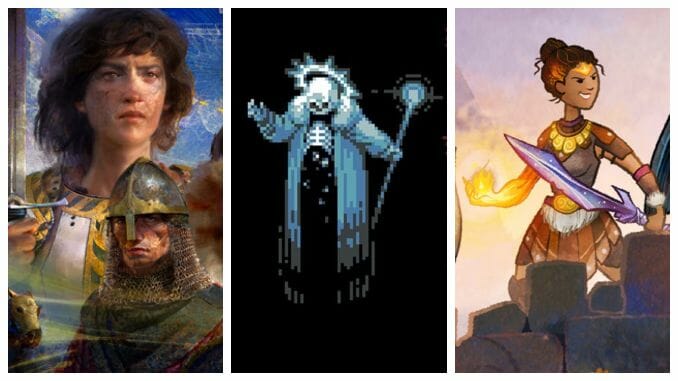
There used to be a pretty huge wall between PC games and consoles. They were almost like two independent sides of the same industry, with the biggest console games almost never making it to computers, and the best computer games only coming to console after a few years, usually in a diminished state. The rising ubiquity of home computers and the convenience of digital distribution channels like Steam helped break those walls down in the ‘00s, and now playing a game on PC or on console is just a matter of preference. 2021 saw a handful of great PC exclusives, from the old-school 4X titan Age of Empires IV, to the divergent narratives of the storytelling RPG Wildermyth. But even games that seem perfect for the PC, like Wildermyth (which is getting a Switch port in the next year), Loop Hero, and Unpacking, come to console now, whether it makes sense to play them with a controller or not. There’s almost no such thing as a pure PC game anymore, and although that can lead to awkward console ports, it’s still something that should be celebrated; after all, every game should be as accessible to as many players as possible. Here’s Paste’s list of the best new games released for PC in 2021, including a few exclusives and a bunch of multiplatform games.
20. The Vale

How do you take a “videogame experience” and communicate it to someone who cannot see at all? The Vale has only the most cursory connection to “video” and then almost purely as a kindness to sighted players. The kneejerk response to “a videogame without graphics” is obviously a text adventure, but that would be wrong. While it certainly borrows ideas from text adventures, and video-driven videogames themselves, The Vale has far more in common with radio plays. This is an interactive audio drama. As an audiogame, it delivers an experience in line with big RPG/Adventure titles like Skyrim or The Witcher. And while it might not be the AAA of games for the blind and visually impaired, it might just kick AAA asses into understanding there is both a market for games that cater to these players, and also that there are ways to bake accessibility into existing games that are designed around sighted players.—Dia Lacina
19. Lost in Random
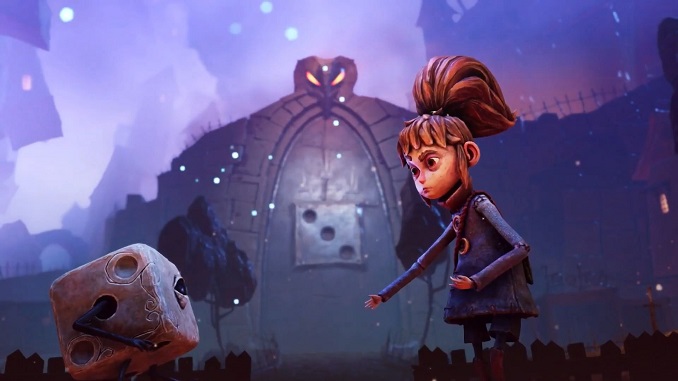
Lost in Random is a joy, not just in its shockingly easy-to-grasp amalgamation of gameplay mechanics, but in the entire world Zoink Games has created. Although it lacks the breadth and fidelity of its big budget counterparts, Lost in Random is just as, if not more, immersive and engaging, and it does so within a gameplay system that looks unwieldy but plays like a dream.—Joseph Stanichar
18. Mundaun
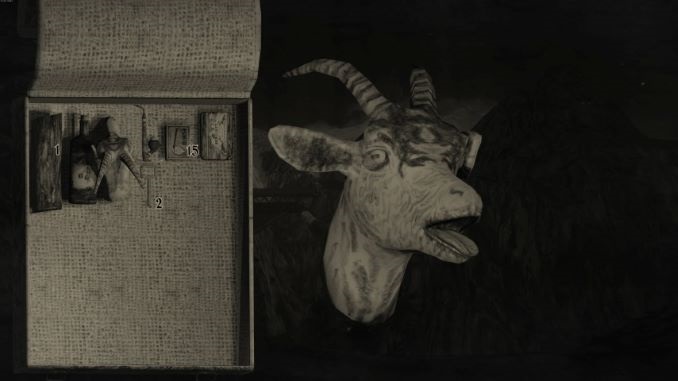
Mundaun’s greatest strength is its source material, Swiss folklore. The format, which relies on exploration and puzzle-solving, isn’t particularly innovative, but the story it facilitates is cryptic and compelling enough to give it momentum. Its pacing is also wonderfully supported by how well the game blends together its exploration and scripted moments, balancing the two so fluidly that its bizarre events come together in a way that feels almost dreamlike. Its darker moments do not feel cinematically imposed on the player, but rather, that they are something that happens to—or with—them. The visuals, for example, often play on light and shadow in a way that relies on the player’s position in the room to progress the scene. Style-wise, its black and white color scheme, often used in similar games to soften rough visual edges (think 2014’s Betrayer), combined with hand-sketched textures (reminiscent of Disturbed from back in 2016), evokes the folksiness of a children’s storybook but channels a grim sparsity that supports its themes well.—Holly Green
17. Knockout City

Multiplayer dodgeball game Knockout City is an absolute blast to pick up and play. It’s inexpensive to boot and simple to keep up with, making it markedly less of a chore to log into, have fun with for an hour or two, and hop back out of unlike most service games. It’s got a fun style and look to it that makes it all the more inviting, and solid enough mechanics to master that I feel satisfied coming back to practice. Straight up, it’s also just fun as hell to play something that isn’t so grim or serious, making Knockout City a success in my eyes.—Moises Taveras
16. Black Book
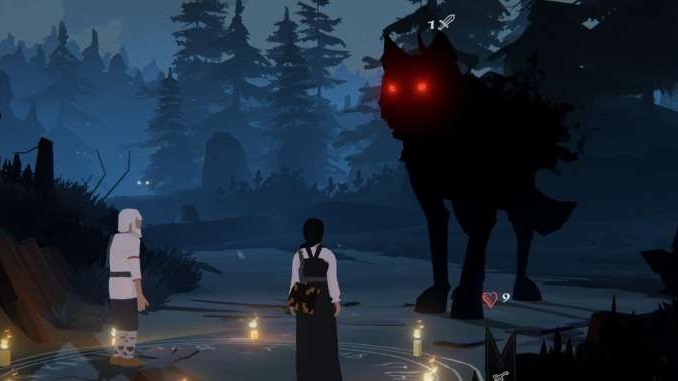
At first, Black Book feels familiar. Its card-based battle system borrows from the explosion of deckbuilding roguelikes, most obviously Slay the Spire. The way the game structures itself around gaining new cards and expanding potential strategies will be familiar to anyone who has played games like this before. However, rather than using a slight narrative framing to hold up a number crunching strategy game, Black Book’s combat feels like the metaphor of a JRPG. It is a system that deepens its themes of people living in a dying ancient myth. Black Book is interested in a world beyond the material, beyond its mathematical parts. Even as it uses math to represent the ephemeral, it tries to ground the numbers in the mythical.—Grace Benfell
15. Chicory: A Colorful Tale
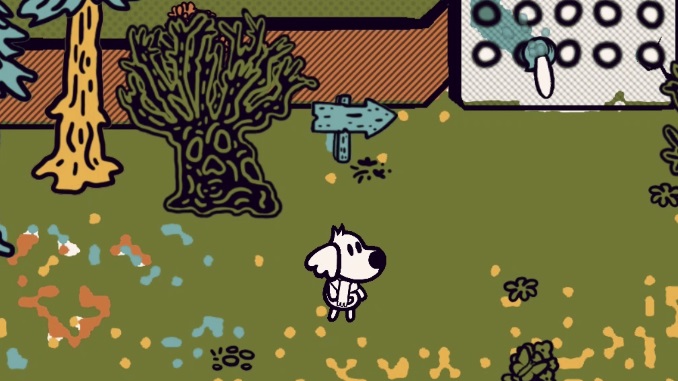
Chicory is filled with contemplative moments on the purpose of art and how it relates to the mental and spiritual health of the artist. The protagonist soon falls into the dangerous pit of comparing themself to other artists—previous wielders, their sister (a talented artist in school for her craft, while they’re just a novice), and others aspiring to become the wielder someday. There’s a lot of doubt that comes with being “the chosen one” here, and it’s even more salient given the wielder can step down at any time and pass The Brush to whoever they want. It’s enough to make the player question their own biases about art; do they value education and skill over enthusiasm? What is the function of art if it’s grown to only make us unhappy?—Austin Jones
14. Dungeon Encounters

Dungeon Encounters might be the greatest dungeon crawler of all time. Bringing together veteran Final Fantasy director Hiroyuki Ito (creator of the Active Time Battle system), rockstar composer Nobuo Uematsu, and Final Fantasy Tactics Advance artist Ryoma Ito, this game is an ATB love letter to Original Dungeons & Dragons. Throw together a party of a Panther-man, a single mom with a medieval shotgun, a golden retriever, even a robot, and go exploring actual graph paper mazes littered with hexadecimal encounters. Dungeon Encounters is the genre stripped to its bones, and made to dance with charm, mirth, and the sharpest approach to combat the genre has ever seen.—Dia Lacina
13. Age of Empires IV

I love inventing guys to be angry with. And Age of Empires IV let’s me shout, “YOU TELL EDGAR, I’M FUCKING COMING FOR HIM!” as I highlight a hundred horsemen and press them ever more northward. And each time they bark affirmatively in Old Norman. It rules. When I build new buildings and upgrade my civilization, I can build new guys. Better guys. King William may not have much personality on the battlefield, and largely ceases to exist outside of it, but it’s not important. Ages of Empires IV isn’t a game about a king’s identity. When the Mongols need to differentiate themselves it’s through literally picking up their Town Center and moving it around the map—not because The Khan has a real personality to embody. This isn’t the game where I’m going to tell the story about the time I, Agamemnon, King of Mycenae, raised an army to chase down one man at the far edge of the world and lay waste to the small township he took final refuge. Initially I thought that was a flaw. Where Total Wars let me become Agamemnon, or Liu Bei of the Perpetual Vibe Check, and Civ V bid me to become Theodora, Hottie Empress of Byzantium, and spread Sapphism across the globe to achieve my glorious Cultural Victory, here there’s none of that. I’m simply an amorphous hand guiding the imperial machinery. But honestly, that’s okay. There’s no distraction in Age of Empires IV. It’s a return to a purity of build base, make dudes, obliterate enemies. And I came to love it so much I want to force my dad to spend his weekend playing it with me while he shouts what bits he remembers of the St. Crispin’s Day speech over voice chat, as our massive blobs of 15th century dudes collide at our own virtual Agincourt.—Dia Lacina
12. Unsighted

Would you want to know exactly when you’re going to die? Or, worse, exactly when you’re going to become undead—when your mind and personality and memories fade away, and you become a brainless killing machine? That’s the dilemma at the heart of Unsighted, one of the best written games of the year. A race of synthetic creatures become sentient, driving their human creators to try and destroy them; these automatons now face extinction as the humans deprive them of the element that keeps them animated. Every NPC you meet has a limited shelf life, with an on-screen marker telling you how many hours they have before they run out of juice and become “unsighted.” That turns a typical backtracking-heavy Metroid-style adventure into a stressful race against the clock as you try to protect and help as many automatons as you can while also trying to solve the problem of the human threat. What makes Unsighted really shine are your relationships with those other characters; when they start to inevitably blink off and turn unsighted, you’ll be overcome with loss and guilt.—Garrett Martin
11. Resident Evil Village
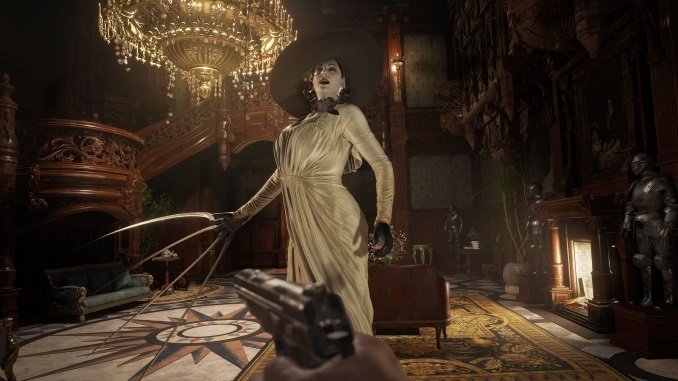
Resident Evil Village goes to great lengths to instill an ominous atmosphere with an odd undercurrent of lightness—there’s a ton of dread, like in Resident Evil 7’s early moments, but there’s an added layer of goofiness that seriously cuts the tension. I love that. Resident Evil has always been goofy; horror games in general are filled to the brim with cheese and insane situations, from UFOs in Silent Hill to dorky dialogue in Until Dawn. Something about allowing the audience to participate in the horror directly through controlling the game’s central victim creates hilarious moments, intentional or otherwise. I’ll always remember fondly the first time I played Alien: Isolation with a friend and learning the hard way that you aren’t actually safe while crawling in a vent. The comedy of horror, derived from inconsistencies in tone and questionable choices no human would make, is an integral element that’s simply not acknowledged enough. When I remember a horror movie, I should laugh about my naïve experience sitting through it. I should be eager to terrify my friends with it, to grin as they jump out of their seats.—Austin Jones
10. Hitman 3

Playing Hitman 3 feels like being thrown into a random improv scene. You’re constantly switching parts, objectives, and wardrobe, making sure never to break character before you eliminate your target. Every stage is a performance, and they’re all incredibly distinct and fun. You play as world-class executioner, Agent 47, and due to his occupation there’s a thick cloud of intensity and death that follows him around every corner. Each contract sends you to varied and visually striking locations all over the globe, setting up flexible environment-specific boundaries while simultaneously encouraging you to push against them (or even throw it all out and do it your way). Both the plot and general premise of IO Interactive’s Hitman 3 are straight-faced and sober, yet it somehow manages to be one of the funniest games I’ve played in a minute due to clever prop comedy and witty, well-written NPCs. After spending a bunch of time playing around in its charming and compact world, Hitman 3 has proven to be a well-constructed assassination sandbox full of tension, fashion, and possibility. —Funké Joseph
9. Before Your Eyes
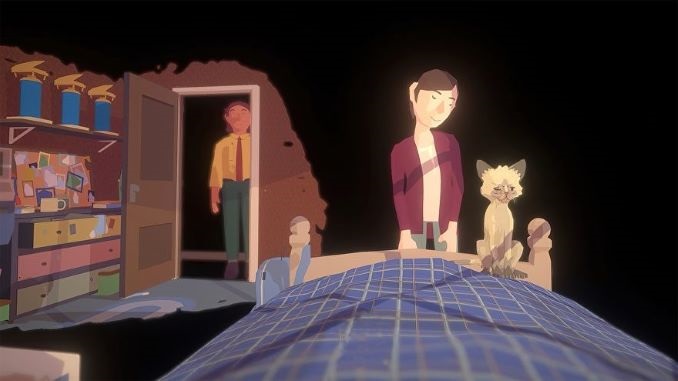
Don’t dismiss Before Your Eyes as a gimmick. Yes, it’s the blinking game—the one that you literally play by blinking your eyes in front of a webcam—but there’s way more going on here than this mechanical tomfoolery. With its focus on a newly dead man’s entry into the afterlife, it has a touch of Pixar’s Soul crossed with the mundane sorrow of something like Death of a Salesman. The game looks back on the main character’s very normal life and the major relationships that shaped it, and the story’s generally well-told enough to avoid the kind of cheap, maudlin sentimentality you might expect from it. The blinking contributes more to the game’s power than you might expect, but if you don’t want to hook your webcam up you can always play it with a mouse instead. Before Your Eyes is a small, quiet game with outsized emotional heft.—Garrett Martin
8. Deathloop
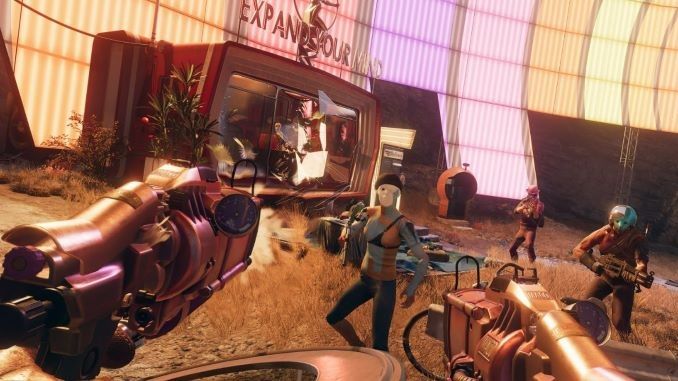
At the end of the day, the loop is all that matters. Deathloop leaves it all out on the table, reconstructing the immersive sim a few different ways in order to pull you under. Luckily for the game, it’s a damn marvel and works like a charm. While I can nitpick about Deathloop’s shortcomings, I’d rather just point you to a game that’s a joy to play, confident in itself, touts two wonderful Black leads, looks wonderful, and rewards you for thinking outside the box. While it doesn’ quite feel like an evolution of the formula, it’s almost assuredly Arkane’s most feature-complete and refined take on it. Deathloop is countless things, and most of them are great.—Moises Taveras
7. Loop Hero
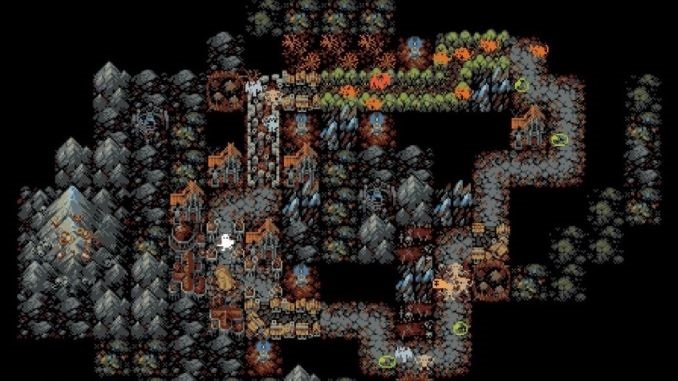
Loop Hero is a roguelike, a deck builder and an RPG with the cadence and look of a tower defense game, wrapped in a grim but simplistic ‘90s PC game aesthetic. It’s a mashup that feels like it shouldn’t work, because that sentence I just wrote sounds preposterous. Instead, Loop Hero is absolutely magnificent. While it may seem unengaging because it effectively plays itself, it really is just prompting the player to look at gameplay from another angle, namely a more systems-driven one. For a person like me, who doesn’t really craft “builds” in RPGs, it’s made me realize why that is actually a rewarding aspect of those games. Now I spend half my time in Loop Hero making numbers go up and making optimizations I never would have, before embarking on another loop.—Moises Taveras
6. Genesis Noir

Genesis Noir is a cosmic point-and-click mystery about the meaning of life, the tragedy of death, the creation of the universe, and, oh yeah, jazz. Yes, it’s incredibly pretentious, but in a way that absolutely works, drawing you in instead of pushing you away. It has lofty goals and it isn’t afraid to really go for ‘em, with a cleverness and thoughtfulness that makes even the most esoteric decision land with power. It’s also the most stylish game of the year, with a noir-ish black-and-white color scheme occasionally broken up by flashes of color, incredible character designs, and an atmospheric jazz score that fits it perfectly. It’s one of the most beautiful and entrancing games of the year.—Garrett Martin
5. Forza Horizon 5

Forza Horizon 5 is the most gorgeous and dynamic game I’ve played on the Xbox Series X by a mile. That said, the beauty of the game isn’t just in the mechanics alone. It’s in how the game loves, respects, and brings Mexico to life. When it comes to representing Mexico on-screen, Americans like one thing, and pretty much one thing only: Sepia tones. Baked in browns and oranges, representations of Mexico on screen in film and television strip the country of its beauty and distill it down into its most stereotypical parts, often using it to highlight narcos. But in Forza Horizon 5 the diversity of the races is met with the diversity of Mexico itself. Mexico isn’t just a desert landscape, and the 11 distinct biomes in the game highlight that. It’s clear that a lot of love went into Forza Horizon 5. You can see it in the car selection. You can see it in the environmental design. You can hear it in the playlists. This game thrives on a culture of love that is baked into every gameplay element. In every way, Forza Horizon 5 is a love letter to Mexicans, and it’s one I’m thrilled that I opened.—Kate Sánchez
4. Sable
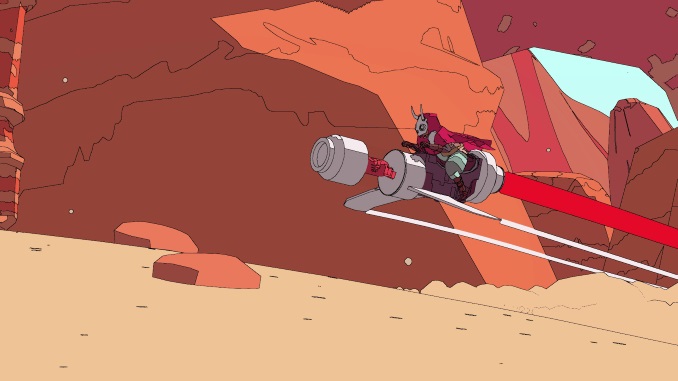
Fittingly, Sable’s title comes from its protagonist’s name, not her role or the place she lives. It foreshadows the game’s small stakes. Sable is a Glider. Just now coming of age, she leaves her home to discover who she might become and what role she might play. To begin, Sable wears the mask of her culture, made from an Ibex skull. As Sable helps other people, she gets badges, which she can turn in for other masks. For example, she could take the mask of the mechanist becoming an expert on refashioning the ancient machinery around her into something practical. She could become a Climber, exploring the highest margins of the world. She could become something as yet unnamed or unanticipated. Its openness means that Sable makes very few demands of you. In a real sense, everything is optional. Because of that, it actually feels free. It is not the freedom to move through space uninhibited, to dominate or control. Rather it is the freedom to determine who you are, to let the people around you make you into something new.—Grace Benfell
3. Wildermyth
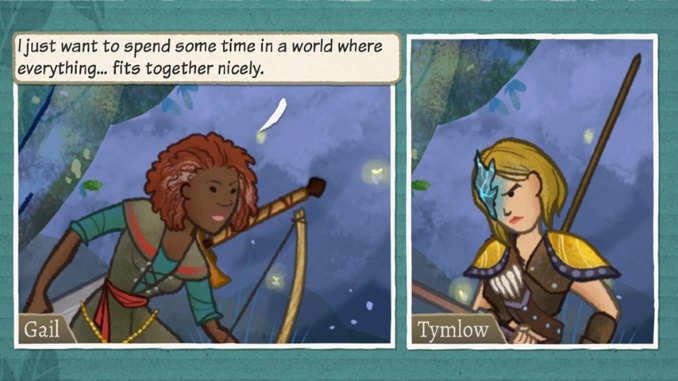
Decisions in Wildermyth aren’t about getting something right or wrong. They’re about telling the most entertaining story. And that’s why no videogame has ever been more reminiscent of my tabletop RPG experiences with friends. Rather than a system like Dungeons & Dragons that offers small variants of failure and success in actions, it is more similar to modern systems like Powered by the Apocalypse games and Blades in the Dark, games that are designed for players to “fail forward.” It’s a thematic value that I wish more games implemented.—Waverly
2. Death’s Door
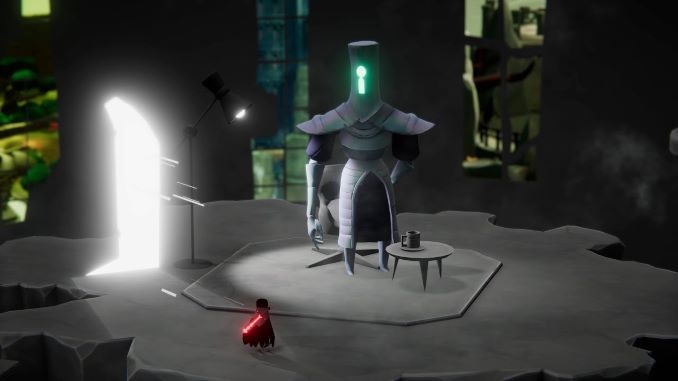
Death’s Door implicitly argues something the entertainment world at large needs to understand: Nostalgia doesn’t have to be shameless or oppressive. It doesn’t have to be the summation of a game’s (or a movie’s, or a TV show’s) ambition. It doesn’t have to be splashed all over the cover and title screen, or the full extent of the marketing campaign. Death’s Door deeply evokes the spirit of some of the most beloved games of all time, and does it well enough that anybody familiar with those legendary games will no doubt recognize and appreciate it. And it does all this with a context and presentation that makes it feel new and vital and not just like a calculated imitation of the past. It takes so much of what made the original Zelda and A Link to the Past into timeless classics, but makes them into their own. Nostalgia can be part of the package, but it shouldn’t be the whole point, and Death’s Door’s cocktail of mechanical nostalgia and narrative creativity is something we don’t see enough of in today’s IP-crazed business.—Garrett Martin
1. Psychonauts 2
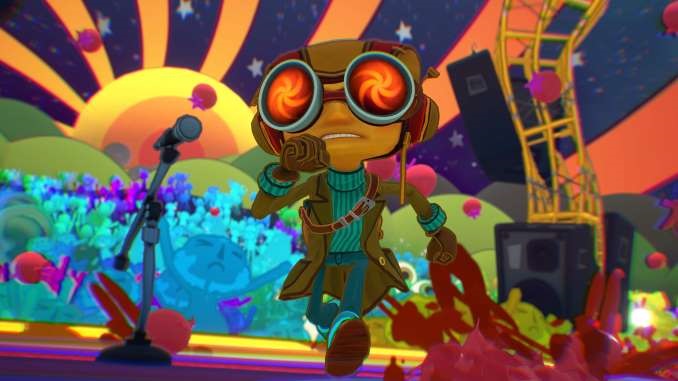
Psychonauts 2 feels like a game made by real people who care about real people. Many games have come down the pike the last several years with a focus on the psychological state of its characters, and thus its players, but too often they lack any tact or any legitimate insight into how people think and feel. They use sorrow and violence as shortcuts, relying on cheap scares and easy provocation. It’s like they’re made by machines, or the board room, or some algorithm that slightly rearranges previous AAA hits into something that’s supposedly new. Too many of these games fall into that witless trap of thinking something “serious” and “important” must also be humorless and dark, unrelentingly grim and fatalistic. Psychonauts 2 reveals that for the nonsense that it is, showing that you can more powerfully and realistically depict emotion when you use warmth, humor, humanity—the whole scope of emotions that make us who we are. Psychonauts 2 asks “how does it feel to feel?”, and then shows the answer to us—and the games industry at large—in brilliant colors.—Garrett Martin